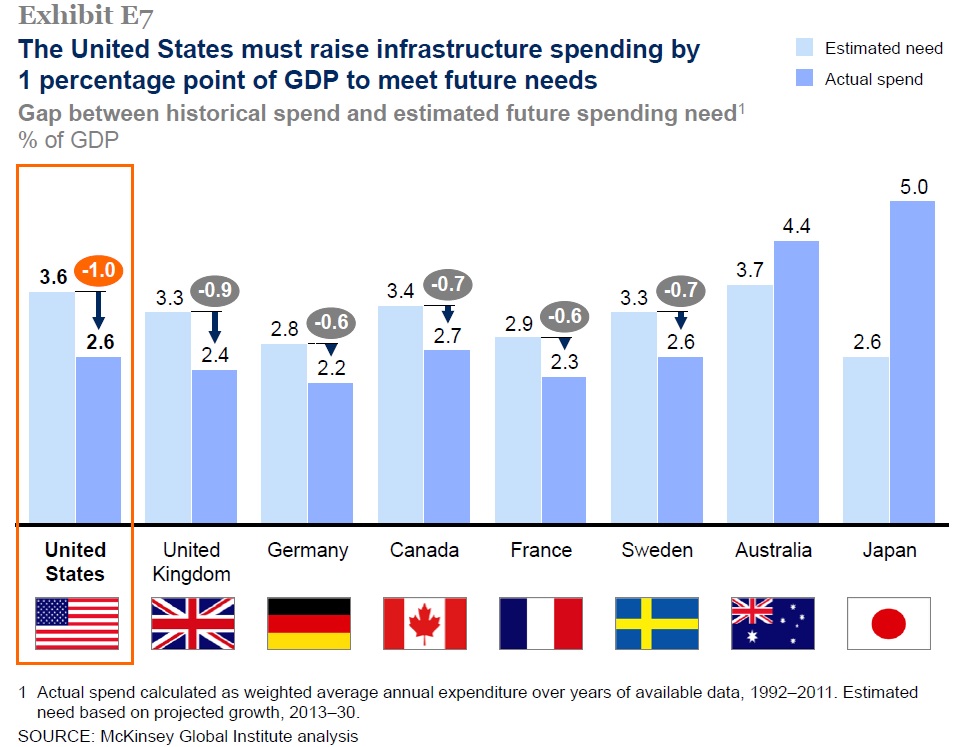
In an excellent new post, John Cochrane corrects some of Greg Mankiw's points on gold as an investment, writing:
In any case, Greg shouldn't have phrased the question, "how much gold should I hold according to mean variance analysis, presuming I'm smarter than everyone else and can profit at their expense by looking in this crystal ball?" He should have phrased the question, "how much more or less than the market average should I hold?" And "what makes me different from average to do it?"...
As Greg points out, gold is a tiny fraction of [global] wealth. So it should be at most a tiny fraction of a portfolio.Quite so. But even if one would not personally choose to make one-way directional bets on an asset, one might want to specify the asset's full state-contingent payoff structure, for those who do choose to speculate or to use the asset to hedge their idiosyncratic risks.
In other words, when does gold pay off? Cochrane tosses out a possible answer:
There is all this bit about gold, guns, ammo and cans of beans. If you think about gold that way, you're thinking about gold as an out of the money put option on calamitous social disruption, including destruction of the entire financial and monetary system. That might justify a different answer.This idea is pretty common. But is it true? Would gold really pay off in the event of a calamitous social disruption? I'm really not sure that it would.
The basic idea here is that fiat money's value rests on the stability of governments; remove governmental stability, and people will go back to using gold as money (or at least to using gold-backed money), as in days of yore. If that happened, it would be handy to have stocked up a whole bunch of the suddenly back-in-use medium of exchange.
But I seriously question whether this would ever happen. See, both technology and the structure of governance have really changed since the days when gold was used for money. The assumption that the end of the Recent System (fiat money) would make us revert to the Old System (gold-backed money or gold as money) does not seem well-founded to me.
First of all, gold has always had a lot of limitations as a medium of exchange. Most notably, it is relatively easy to steal. To realize this, all you have to do is look at games like World of Warcraft, Diablo, Dungeons and Dragons, or the original Final Fantasy. In those games, gold is the money, and you often get gold not by doing an honest day's work, but by running around and beating people up and taking their gold. In other words, the entire world of modern fantasy role-playing is a subtle joke on gold's unsuitability as a medium of exchange.
Now in the past, people just sucked it up and dealt with this, spending large amounts of money and effort to guard their gold. But in the modern day, better alternatives are available. In particular, electronic security is cheaper than physical security. It's easier to guard digits than lumps of gold. In fact, in the case of gold-backed money (rather than physical gold money), you'd need electronic security in addition to guards at Fort Knox. Non-gold-backed digital currency is always cheaper to use than gold-backed digital currency.
So if fiat systems collapsed but electronic networks remained intact, it seems to me that we'd move to some sort of Bitcoin-type artificially scarce digital currency, rather than gold. Not Bitcoin itself, but some electronic currency managed by an institution with lots of staying power and respect. I'd put my money on ToyotaBucks.
OK, but what about a calamity so huge that electronic networks collapsed? In that case, wouldn't we have to go back to using physical money?
Maybe, but it wouldn't be gold. In the days when people carried around gold doubloons and whatnot as money, you had a global political system characterized by pockets of stability (the Spanish Empire, or the Chinese Empire, or whatever) scattered among large areas of anarchy. Those stable centers minted and gave out the gold coins. But in the event of a massive modern global catastrophe that brought widespread anarchy, the gold bars buried in your backyard would not be swappable for eggs or butter at the corner store. You'd need some big organization to turn the gold bars into coins of standard weights and purity. And that big organization is not going to do that for you as a free service. More likely, that big organization will simply kill you and take your gold bars, Dungeons and Dragons style.
In other words, I think gold is never coming back as a medium of exchange, under any circumstances. It is no more likely than a return of the Holy Roman Empire. Say goodbye forever to gold money.
So when does gold actually pay off? Well, remember that stories do not have to be true for people to believe them. Lots and lots of people believe that gold or gold-backed money in the event of a global social disruption. And so when this story becomes more popular (possibly with the launching of websites like Zero Hedge?), or when large-scale social disruption seems more likely while holding the popularity of the story constant, gold pays off. Gold is like a credit default swap backed by an insolvent counterparty - it has no hope of actually being redeemed, but you can keep it around forever, and it goes up in price whenever people get scared.
In other words, gold pays off when there is an outbreak of goldbug-ism. Gold is a bet that there will be more goldbugs in the future than there are now. And since the "gold will be money again" story is very deep and powerful, based as it is on thousands of years of (no longer applicable) historical experience, it is highly likely that goldbug-ism will break out again someday. So if you're the gambling type, or if you plan to start the next Zero Hedge, or if your income for some reason goes down when goldbug-ism breaks out, well, go ahead and place a one-way bet on gold.
The only way gold will never pay off again is if practically everyone reads and believes this blog post. Not much chance of that happening!



















